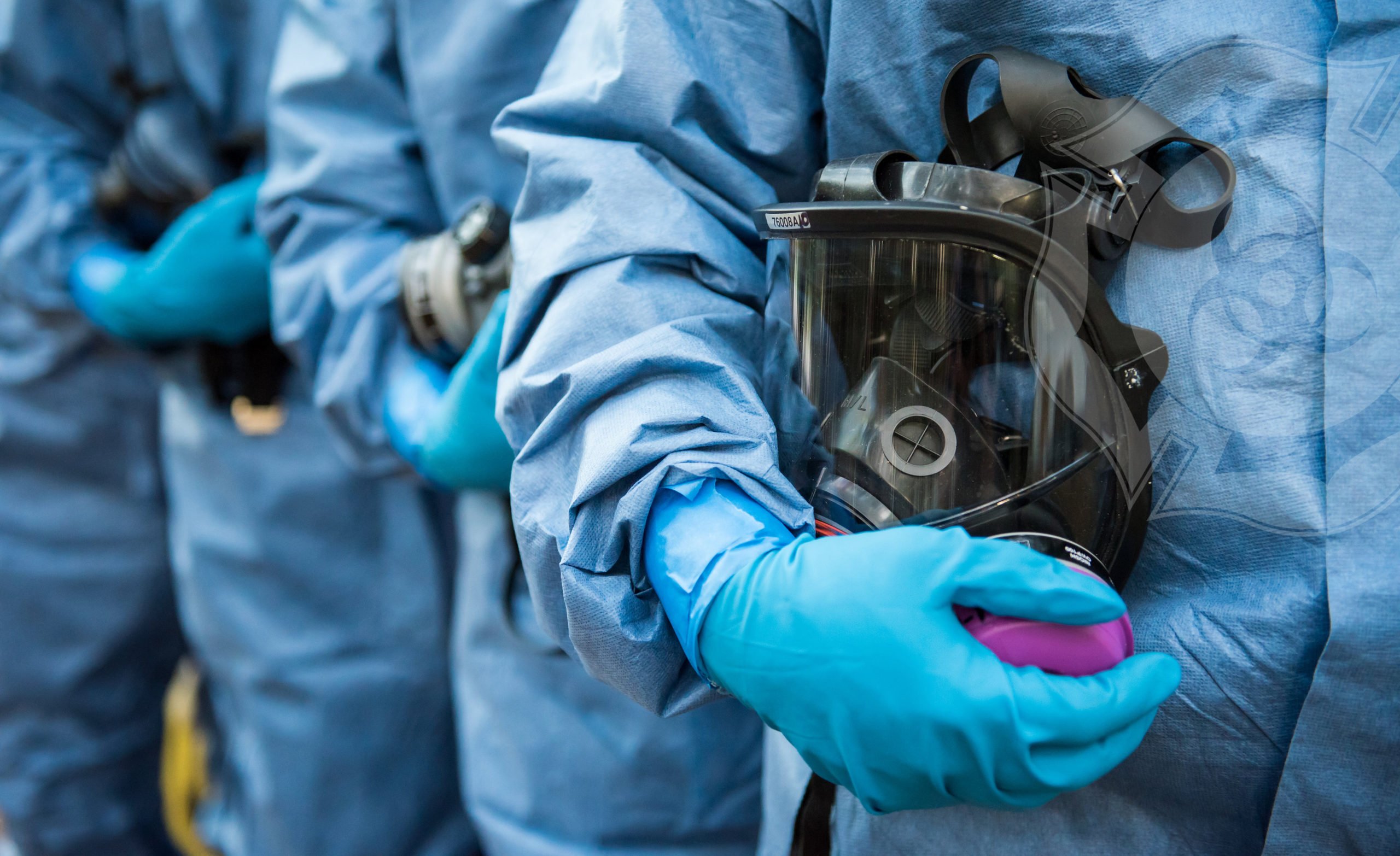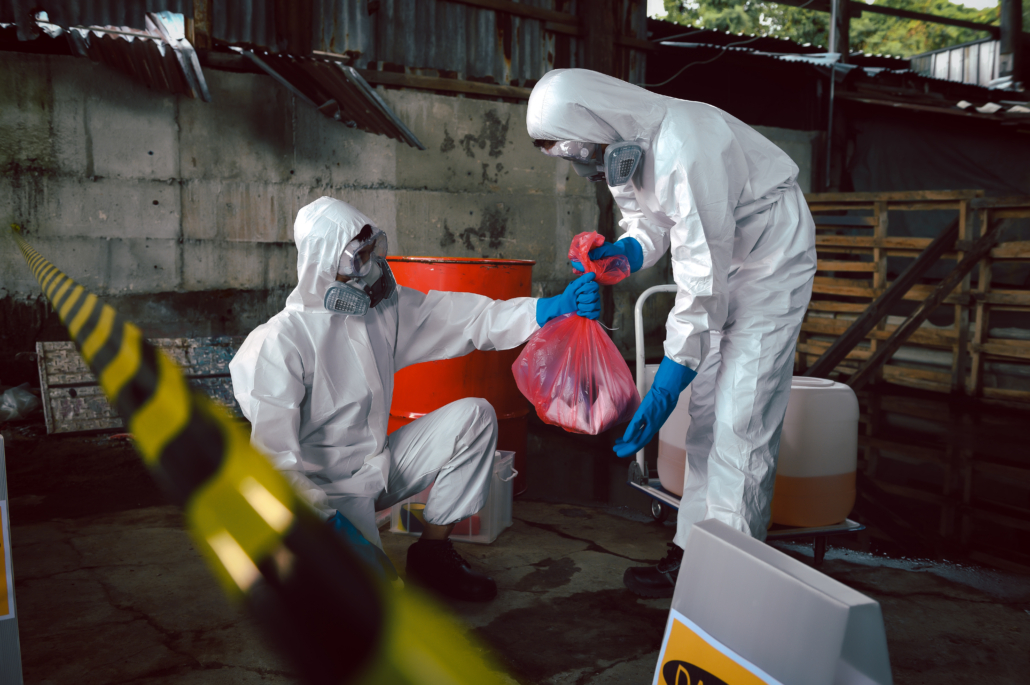Biohazard Removal: Safe Handling and Disposal of Hazardous Products
Biohazard Removal: Safe Handling and Disposal of Hazardous Products
Blog Article
Specialist Biohazard Cleansing and Purification for Blood, Bodily Fluids, and Hazardous Materials
The potential wellness threats connected with exposure to biohazards emphasize the vital requirement for thorough handling and complete clean-up. As we browse the elaborate landscape of biohazard cleaning, understanding the subtleties of regulations, compliance, and the customized equipment at play ends up being essential in making certain a safe and complete decontamination process.
Health And Wellness Risks of Biohazard Direct Exposure
Direct exposure to biohazards poses significant health and wellness threats that can result in severe repercussions for people and areas alike. Biohazards encompass a large range of biological materials, consisting of blood, bodily fluids, mold and mildew, germs, infections, and various other possibly infectious products. When individuals come into contact with these biohazards, whether with accidents, incorrect handling, or environmental direct exposure, they encounter the threat of having significant ailments or illness.
Among the primary health risks related to biohazard direct exposure is the transmission of transmittable conditions. Bloodborne virus such as HIV, liver disease B and C, and different bacteria can be present in biohazardous products, positioning a straight risk to human wellness. Inhaling airborne biohazards like mold spores or entering into contact with contaminated surfaces can additionally result in breathing concerns, allergies, and other unfavorable health effects.
Additionally, biohazard exposure can have lasting health and wellness ramifications, with some diseases showing up years after the first get in touch with (Blood Cleanup). As a result, it is important to prioritize correct biohazard cleaning and decontamination to minimize these health and wellness risks and ensure the safety and security of communities and people

Specialized Educating for Biohazard Clean-up
When it comes to managing biohazard cleanup effectively and safely, specialized training plays a basic function in guaranteeing appropriate purification procedures are complied with. Biohazard cleaning requires particular expertise and skills to successfully minimize risks related to bloodborne virus, physical fluids, and dangerous materials. Experts learnt biohazard cleaning undergo extensive guideline on how to safely take care of, eliminate, and dispose of biohazardous products to prevent contamination and exposure.
Specialized training for biohazard cleanup covers a variety of essential subjects, including correct individual protective devices (PPE) usage, bloodborne microorganism awareness, decontamination strategies, and contaminated materials disposal methods. People learnt biohazard clean-up are furnished with the necessary expertise to analyze contamination levels, recognize prospective dangers, and implement suitable cleanup procedures in conformity with governing criteria.
Constant training and education are critical in the field of biohazard cleanup to remain upgraded on the current decontamination innovations, safety protocols, and regulations. By purchasing specialized training, biohazard cleaning specialists can properly react to emergency cleanup scenarios and guard both public health and wellness and the atmosphere.
Significance of Proper Purification Strategies
Using proper purification methods is vital in biohazard clean-up to efficiently eliminate hazardous materials and decrease wellness dangers. Effective purification not only ensures the elimination of visible traces of blood, bodily fluids, and various other biohazards but additionally targets undetectable microorganisms that may pose serious health and wellness risks otherwise appropriately eradicated. By adhering to rigid decontamination procedures, educated experts can substantially reduce the threat of exposure to dangerous microbes, infections, and germs that can cause infections or conditions.
Correct decontamination methods include making use of specialized devices and disinfectants that are specifically designed to reduce the effects of biohazards efficiently. Extensive cleansing and disinfection of infected locations are vital to stop the spread of microorganisms and guarantee a risk-free environment for residents. In addition, the right disposal of biohazardous waste following decontamination treatments is essential in preventing contamination of various other surfaces or people.

Devices and Devices for Safe Cleanup
The proper devices and devices play an important function in making certain the reliable and safe cleanup of biohazardous products. When managing blood, physical liquids, or hazardous materials, biohazard cleansing specialists count on specialized equipment to decrease direct exposure threats and completely decontaminate the affected area. Personal safety devices (PPE) such as handwear covers, masks, safety glasses, and coveralls are important to shield against straight call with potentially infectious products. Furthermore, biohazard cleansing packages having anti-bacterials, absorptive materials, and biohazard bags are made use of to securely consist of and get rid of of contaminated things. Blood Cleanup.
Advanced cleansing tools like hospital-grade disinfectants, HEPA-filtered vacuum cleaners, and misting devices are used to disinfect surfaces and eliminate biohazards effectively. Specialized equipment such as sharps containers and biohazard garbage disposal containers are utilized to safely handle sharp objects and biohazardous waste materials. By making use of the right devices and devices, biohazard cleansing professionals can make sure a complete cleanup process that focuses on safety and security and reduces health and wellness dangers for both employees and owners of the affected area.
Rules and Compliance in Biohazard Cleaning
Appropriate adherence to guidelines and conformity criteria is paramount in biohazard cleaning to guarantee the security of both workers and the setting. Federal government firms such as click this link OSHA (Occupational Safety And Security and Wellness Management) and the EPA (Epa) have established certain standards for biohazard clean-up treatments to reduce wellness threats and ecological contamination. These laws cover a range of facets including the handling, transport, and disposal of biohazardous materials, as well as the needed training and safety tools needed for personnel associated with the cleaning procedure.
Biohazard cleansing firms should stay updated with these guidelines to assure that their procedures meet the required safety requirements. Failure to conform with these guidelines can result in serious repercussions, consisting of penalties, lawsuit, and jeopardizing the wellness of people and the setting. By following stringent regulations and conformity measures, biohazard cleansing business can successfully reduce threats and make certain a extensive and risk-free clean-up process for all events entailed.
Verdict
To conclude, click resources biohazard cleansing and decontamination require specialized training, proper strategies, and adherence to laws. Direct exposure to blood, bodily fluids, and dangerous materials positions considerable health threats, making it crucial to utilize the best equipment and devices for risk-free clean-up. By following strict methods and guidelines, specialists can efficiently minimize the threats connected with biohazard direct exposure and make certain the safety of both themselves and others.
As we browse the intricate landscape of biohazard cleaning, recognizing the nuances of regulations, compliance, and the customized devices at play comes to be critical in making sure a extensive and secure purification procedure. (Blood Cleanup)
When it comes to managing biohazard clean-up effectively and securely, specialized training plays a fundamental role in guaranteeing proper decontamination treatments original site are followed.Making use of proper purification methods is important in biohazard clean-up to properly remove harmful products and minimize health threats. In addition, biohazard cleansing sets consisting of disinfectants, absorbing products, and biohazard bags are made use of to securely get rid of and consist of of polluted items.
Government firms such as OSHA (Occupational Safety And Security and Health And Wellness Administration) and the EPA (Environmental Protection Firm) have actually established particular guidelines for biohazard cleaning treatments to reduce health threats and ecological contamination.
Report this page